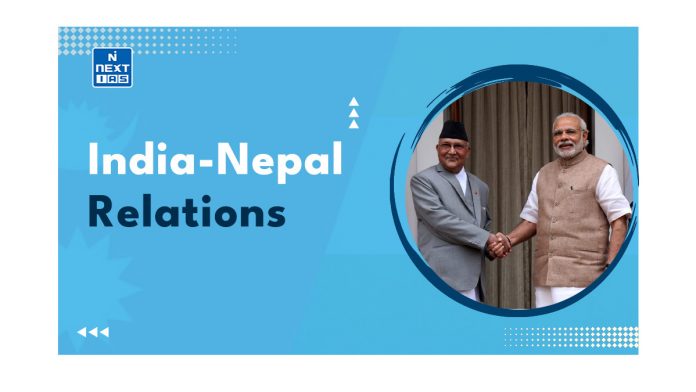There are frequent high-level visits and interactions between the leaders of India-Nepal. In order to facilitate bilateral discussions India-Nepal has established several dialogue mechanisms, including the India-Nepal Joint Commission. Parliamentary exchanges have also taken place between the two countries.
Overall, India-Nepal shares a close and multifaceted relationship based on mutual cooperation and friendship.
Special Relations Between India-Nepal
Defense Cooperation
- India has been assisting the Nepal Army in its modernization efforts by providing equipment and training.
- The two countries also engage in joint military exercises and other defense-related activities.
- The Gorkha regiments of the Indian Army recruit soldiers from Nepal and currently, about 32,000 Gorkha soldiers from Nepal are serving in the Indian Army.
Disaster Management
- When a devastating earthquake struck Nepal in 2015, India provided swift assistance by sending rescue teams, relief materials and medical support.
- The total relief assistance from India exceeded $67 million.
- India also announced a post-earthquake reconstruction package of $1 billion, including grants and concessional loans, during an international conference on Nepal’s reconstruction.
Infrastructure Development
- India has been actively involved in supporting Nepal’s development by providing assistance in various sectors such as infrastructure, health, water resources, education and rural development.
- They have collaborated on the development of border infrastructure, including roads and rail links.
- Indian investment in Nepal is significant, with Indian companies being major investors in various sectors.
Water Resources Cooperation
- Cooperation in water resources, energy and trade is also important in the bilateral relationship.
- India-Nepal has agreements for power exchange and transmission and India currently supplies around 600 MW of power to Nepal.
- They have also established mechanisms to discuss issues related to water resources and hydropower cooperation.
Education
- India’s contribution to human resource development in Nepal is noteworthy, with thousands of scholarships and seats provided annually to Nepalese nationals for various courses in India-Nepal.
Cultural Exchange
- Cultural exchanges and initiatives to promote people-to-people contacts are an integral part of the bilateral relationship. Several agreements have been signed between Indian and Nepalese cultural and media organizations.
Challenges in India-Nepal Relationship
- Issues with Peace and Friendship Treaty: The 1950 Treaty of Peace and Friendship between India and Nepal guaranteed Nepali citizens free movement across the border and employment opportunities in India. However, some perceive this treaty as unequal and imposed by India.
- Territorial Disputes: Certain areas along the India-Nepal boundary, such as Kalapani, have remained unresolved. Nepal claims these territories as part of its own, while India inherited them from British colonial rule.
- Chinese Interference: In recent years, Nepal has been moving away from India’s influence and China has been stepping in with investments, aid and loans. China’s involvement in Nepal’s infrastructure projects through its Belt and Road Initiative poses a threat to Nepal’s role as a buffer state between India and China.
- Security Threat: The porous and poorly guarded border between India and Nepal allows terrorist groups to exploit it for smuggling weapons, ammunition, trained members and fake currency, which poses a significant security risk to India.
- Trust Deficit: The trust between India and Nepal has weakened over time due to India’s slow implementation of projects. Some Nepalese ethnic groups feel that India interferes too much in Nepal’s politics and undermines their political independence, leading to a dislike for India.
Way Forward
- Resolving Water Issues: International law on transboundary water disputes can guide diplomatic talks to resolve the issue.
- Investments: India should increase its investments in Nepal and focus on completing projects more quickly. Projects that benefit the local people will help create a positive image of India.
- Countering China: Given China’s influence, the government should quickly address challenges hindering economic cooperation and foster growth for both countries.
- Manage Border Dispute: Both parties should explore realistic solutions. The successful boundary dispute resolution between India and Bangladesh can serve as a model for the way forward.
Conclusion
India-Nepal has a long history of cultural connections. Nepal is important for India’s economic and strategic interests. Having a friendly and supportive Nepal will serve as a buffer between India and an assertive China.
The Indian government should engage constructively with the new leadership in Nepal and work towards enhancing cooperation in various areas. This will benefit India’s long-term interests.









